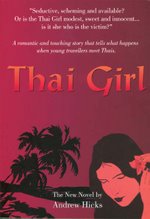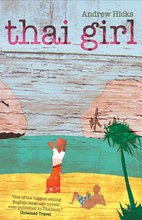
Staying in Ralph and Mee's house in the mountains was magic.

Waking up to a sea of clouds made the long journey worthwhile.

Papa cooks breakfast in his bamboo house nearby,

and Mama and her sister enjoy the meal in their bamboo house.

A walk to their tea garden washes away the stresses of the city,

while Papa picks tea leaves under the jungle canopy.

This village tree is a single banyan which puts down tap roots.

Slaughtering a pig seems to be quite a big event,

and everyone is there, anxious for a slice of the action.

We visit the Chiang Dao caves and feed the fish in the temple pond.

And I recognise a stalactite I last photographd thirty years ago.

Tourists to Thailand rush to the sea and islands but for me the forests and mountains are an even greater draw.
Cat and I have just come back to Bangkok after a short holiday in Chiang Mai and it’s been amazing. Walking through the tea plantations high in the mountains, the light falling soft and dappled on the manicured bushes is an uplifting experience. This magical place could hardly be more different to the endless flat rice fields that surround us at home in our north eastern village in Surin province.
We stayed with Ralph and Mee in their modern home in Mee’s Lahu village high in the mountains above Chiang Rai. We arrived in pouring rain but awoke the next day to the vista of a sea of cloud seen from the upstairs balcony.
From then on our stay was a succession of great experiences.
Mee’s parents live there with them, cooking and eating in a traditional split bamboo room right next to the house. Their life retains many of the traditional routines of their mountain upbringing and every day in season they take the long walk to their tea garden to pick twenty kilos of leaves each.
The village is vibrant with life, at night the children playing in the open area by a vast banyan tree and in the day workers go off on their motorcycles to pick tea. Life is much as it is everywhere in a rural community with small shops, a pork butcher and noodle stalls but unusually for Thailand there are three Christian churches.
On our last day Ralph took us down to the valley to visit the Chiang Dao caves, one of the largest limestone cave complexes in Thailand. After we’d fed the massive fish in the temple pond at the approach to the caves we went inside and were hugely impressed by the echoing caverns.
While I was photographing one of the stalactites I suddenly recognized it as an old friend. It was not the caves themselves that I remembered but the photo I’d taken of this river of limestone three decades ago. On thinking back I soon realized I’d been here just a month or two short of thirty years ago.
That time in the seventies the rice harvest was already coming in and the workers were out in the heat of the fields, swathed in clothes to keep out the dust, threshing and winnowing the rice by hand, tossing it on bamboo trays and blowing away the chaff with big fans. The rice was then hauled away on ox carts for storage in their wooden barns, all so very different to how it’s now done in the twenty first century.
Back in Chiang Mai we drove through crowded streets out of town past the university and the temple of Wat Suan Dork, which is now totally hidden behind rows of shops. On that first visit to Chiang Mai the Suan Dork temple was then a sleepy place. It was outside the urban area and into the the countryside.
We also ate at Aroon Rai, a well know eatery on Mool Muang Road. I told the middle aged waitress I’d been there thirty years before and that, as I remembered it, there'd been no bleak concrete building as now and we’d eaten outside in a quiet garden. Yes, I was right, she said, as she’d started working there just three years before that time.
Worryingly I’d forgotten about the Chiang Dao caves but had remembered the restaurant! This time I’ll have to get back there to both of them sooner than thirty years on.
Yes, Chiang Mai has changed. It’s bigger and brasher, though in many ways it feels very much the same… hot, busy and chaotic but so welcoming and I think I’ll always want to come back.
Now I have to survive being in Bangkok again before we go back to the village, still thinking of the peace of the family tea garden in the mountains.
Andrew Hicks The “Thai Girl” Blog October 2009














































